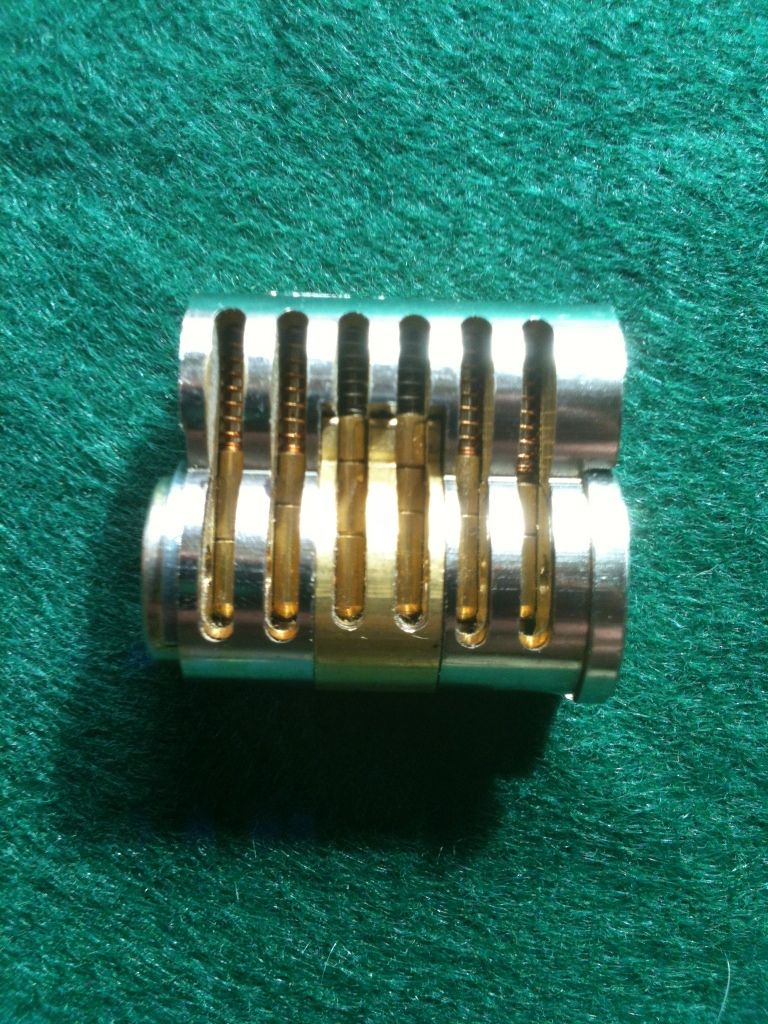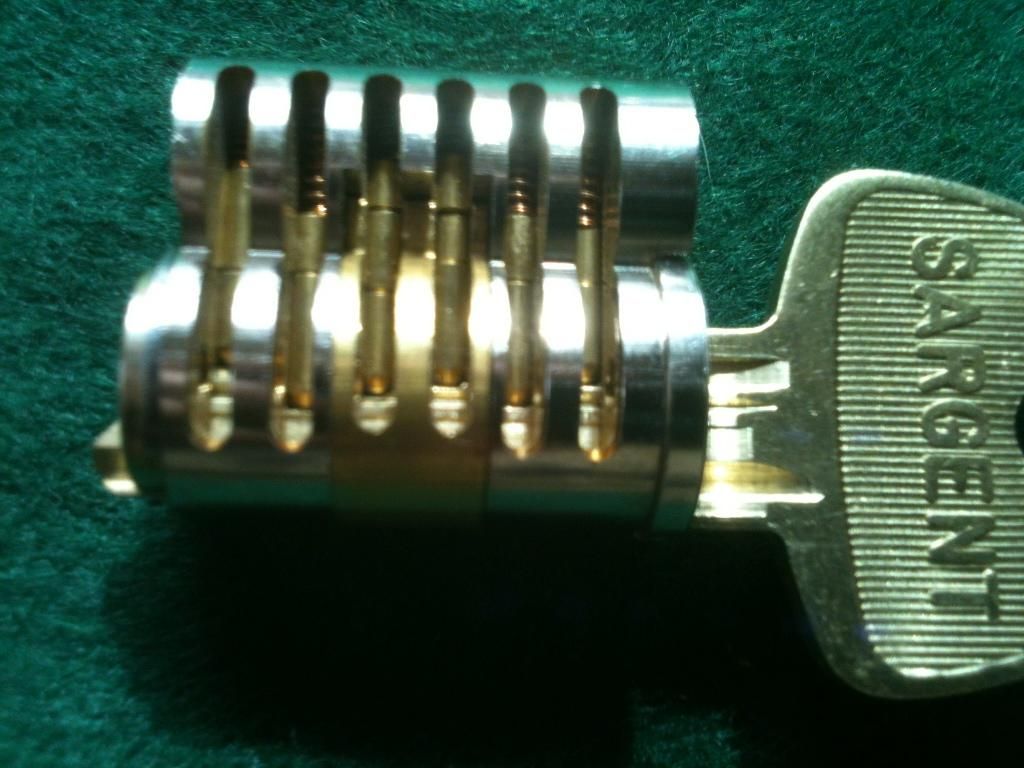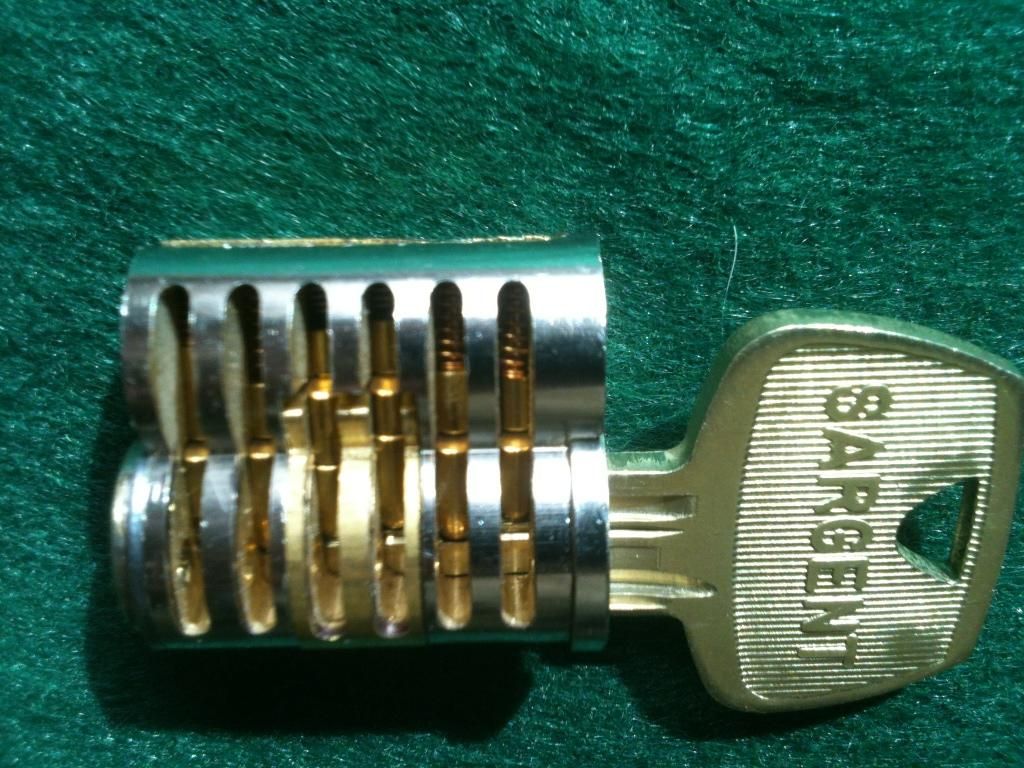|
Information about locks themselves. Questions, tips and lock diagram information should be posted here.
 by victorylocksmith » 6 Apr 2014 1:35 by victorylocksmith » 6 Apr 2014 1:35
If anyone could clearly explain how icore locks work and rekey/maintain them, it would be much appreciated. As a new locksmith, it would seem to be an intelligent move to figure out how to deal with these things.
any additional information would be much appreciated.
-
victorylocksmith
-
- Posts: 201
- Joined: 16 Mar 2014 19:38
- Location: California
 by Onz » 6 Apr 2014 4:05 by Onz » 6 Apr 2014 4:05
An 'interchangeable core is a lock core that can be replaced without fully disassembling the lock. Interchangeable cores typically come in the "Figure 8" form factor. They are characterized by their ability to be changed by the end user rather than a locksmith.
Taken from http://www.lockwiki.com/index.php/Interchangeable_core . Have a good read of this article for hi-rez photos - http://www.crypto.com/photos/misc/sfic/This is exactly the same method as pin tumblr though if you want to remove this core to another lock you don't have to repin the pins etc. On the lockpickwiki it says people have debated about where the padlocks with the screw is really a IC, Personally I recon it's but you can make up your mind on that. Here is what I mean with the padlock IC. 2 Locks, and a padlock: http://i.imgur.com/zjejvL8.jpginside of the padlock see where the screw with go next to the actuator: http://i.imgur.com/D5JDCLA.jpgBilock in the padlock (Bad example but only one I had on my desk): http://i.imgur.com/VQ7Xyzu.jpgLockwood in the padlock: http://i.imgur.com/u5c6a7a.jpgHopes this gives you a much better idea  If more questions just ask and I'll be happy to help. 
-
Onz
-
- Posts: 81
- Joined: 7 Jan 2014 5:13
- Location: Melbourne, Australia
 by GWiens2001 » 6 Apr 2014 7:34 by GWiens2001 » 6 Apr 2014 7:34
They say a picture is worth a thousand words. So here are a few thousand words from a Sargent LFIC lock. SFIC works in a similar way, but SFIC locks can have all the locks used for the control lug that locks the IC core in the lock housing. In this lock, only the center two pin locations work the control lug.  The change (or user) key is in the lock. You can see that the pin shear lines are all in line with the plug.  The plug can now be turned fully. Note how the pins in the control lug are still in place.  Now the control (or core removal) key is inserted. The first and last two pin stacks are still lined up with the plug shear line, but the center two stacks are lines up with the control lug shear line.  The plug can now be turned, but only a very small amount - notice how the pins are only showing a little bit. The control lug has been turned into the lock body by the key, and the IC core can be removed.  Gordon Just when you finally think you have learned it all, that is when you learn that you don't know anything yet.
-

GWiens2001
- Site Admin
-
- Posts: 7598
- Joined: 3 Sep 2012 16:24
- Location: Arizona, United States
 by victorylocksmith » 6 Apr 2014 17:38 by victorylocksmith » 6 Apr 2014 17:38
what then is the most common key blank for these locks, are all the keyways the same? do they vary depending on which company manufactures the lock or is it universal? also, how does it take into consideration, 5/6/+ pin combinations? when it comes to duplication, is it possible to duplicate icore keys on a regular duplicator? i ask this because i currently use a pak-a-punch to code cut most of my keys. if i get the icore attachment will i be able to cut most icore keys?
sorry for all the questions, but to reiterate, i dont know a thing about icore locks and all the information given is already most appreciated.
-
victorylocksmith
-
- Posts: 201
- Joined: 16 Mar 2014 19:38
- Location: California
 by GWiens2001 » 6 Apr 2014 17:40 by GWiens2001 » 6 Apr 2014 17:40
There are dozens of different keyways for SFIC, LFIC, MFIC and so on.
Gordon
Just when you finally think you have learned it all, that is when you learn that you don't know anything yet.
-

GWiens2001
- Site Admin
-
- Posts: 7598
- Joined: 3 Sep 2012 16:24
- Location: Arizona, United States
 by jeffmoss26 » 6 Apr 2014 19:46 by jeffmoss26 » 6 Apr 2014 19:46
With the attachment you are talking about, it would be A2 SFIC which is Best/Falcon/Arrow. The most common keyways are going to be A through R on this PDF, http://www.jmcsecurity.net/pdf/BestKwy.pdf 6 and 7 pin are used most frequently, 5 pin cores are out there but very old. Some people have had success using a duplicator on SFIC keys but it's always recommended to originate keys and not duplicate them. "I tried smoking a blank once. I was never able to keep the tip lit long enough to inhale." - ltdbjd
-
jeffmoss26
-
- Posts: 1090
- Joined: 13 Jan 2012 15:01
- Location: Cleveland, OH
 by victorylocksmith » 6 Apr 2014 20:51 by victorylocksmith » 6 Apr 2014 20:51
GWiens2001 wrote:They say a picture is worth a thousand words. So here are a few thousand words from a Sargent LFIC lock. SFIC works in a similar way, but SFIC locks can have all the locks used for the control lug that locks the IC core in the lock housing. In this lock, only the center two pin locations work the control lug.  The change (or user) key is in the lock. You can see that the pin shear lines are all in line with the plug.  The plug can now be turned fully. Note how the pins in the control lug are still in place.  Now the control (or core removal) key is inserted. The first and last two pin stacks are still lined up with the plug shear line, but the center two stacks are lines up with the control lug shear line.  The plug can now be turned, but only a very small amount - notice how the pins are only showing a little bit. The control lug has been turned into the lock body by the key, and the IC core can be removed.  Gordon
the info is much appreciated but how does one go about rekeying the user code and the control code? im assuming in both situations, it is necessary to remove the icore from the lock. i am getting the feeling with all these springs, this could be very messy if not done very precisely and carefully. does it matter where the control pins are? do they always have to be in the center?
-
victorylocksmith
-
- Posts: 201
- Joined: 16 Mar 2014 19:38
- Location: California
 by GWiens2001 » 6 Apr 2014 20:57 by GWiens2001 » 6 Apr 2014 20:57
The lock has caps at the top of the pin channels. You use tools to force the pins, springs and caps out the top. The springs and caps are damaged in this process, and will need to be replaced.
There is an order to what pins go where, how many pins are in each stack, where what pins need to be located, how long the total height of the pins can be, yadda yadda yadda.
Look around the site, and you will find the basics of the information you are seeking. Parts of it are far, far too complex to go into at this time.
Gordon
Just when you finally think you have learned it all, that is when you learn that you don't know anything yet.
-

GWiens2001
- Site Admin
-
- Posts: 7598
- Joined: 3 Sep 2012 16:24
- Location: Arizona, United States
 by cledry » 7 Apr 2014 19:32 by cledry » 7 Apr 2014 19:32
GWiens2001 wrote:The lock has caps at the top of the pin channels. You use tools to force the pins, springs and caps out the top. The springs and caps are damaged in this process, and will need to be replaced.
There is an order to what pins go where, how many pins are in each stack, where what pins need to be located, how long the total height of the pins can be, yadda yadda yadda.
Look around the site, and you will find the basics of the information you are seeking. Parts of it are far, far too complex to go into at this time.
Gordon
Actually Sargent recommends you rekey using a follower just as you would an ordinary lock. It works for me and is much easier than removing a cap and possibly deforming the shell as you re-cap the lock. Sargent also uses hollow driver pins in the control chamber with different springs. I think victorylocksmith first needs to get the basics down before jumping in on IC cores, there are too many different kinds to explain easily. Jim
-

cledry
-
- Posts: 2836
- Joined: 7 Mar 2009 23:29
- Location: Orlando
-
 by cledry » 7 Apr 2014 19:35 by cledry » 7 Apr 2014 19:35
Sargent does offer a lot of useful info on their site that you can download in pdf format. This concerns also IC core rekeying, stack heights and calculations, picking a control key etc.
Obviously applies only to Sargent, and only to their current line of cores. They have used to other IC core systems in the past.
Jim
-

cledry
-
- Posts: 2836
- Joined: 7 Mar 2009 23:29
- Location: Orlando
-
 by Evan » 7 Apr 2014 21:46 by Evan » 7 Apr 2014 21:46
-
Evan
-
- Posts: 1490
- Joined: 5 Apr 2010 17:09
- Location: Rhode Island
 by victorylocksmith » 8 Apr 2014 0:15 by victorylocksmith » 8 Apr 2014 0:15
cledry wrote:GWiens2001 wrote:The lock has caps at the top of the pin channels. You use tools to force the pins, springs and caps out the top. The springs and caps are damaged in this process, and will need to be replaced.
There is an order to what pins go where, how many pins are in each stack, where what pins need to be located, how long the total height of the pins can be, yadda yadda yadda.
Look around the site, and you will find the basics of the information you are seeking. Parts of it are far, far too complex to go into at this time.
Gordon
Actually Sargent recommends you rekey using a follower just as you would an ordinary lock. It works for me and is much easier than removing a cap and possibly deforming the shell as you re-cap the lock. Sargent also uses hollow driver pins in the control chamber with different springs. I think victorylocksmith first needs to get the basics down before jumping in on IC cores, there are too many different kinds to explain easily.
yes, i agree. definitely need to learn more of the basics, the more i learn, the more i learn how little i know.
-
victorylocksmith
-
- Posts: 201
- Joined: 16 Mar 2014 19:38
- Location: California
 by billdeserthills » 14 Apr 2014 22:48 by billdeserthills » 14 Apr 2014 22:48
I have the tools for rekeying Best IC Core locks and I do my best to never work on them. Thing I discovered right off is the customer almost Never has the core key, because the last locksmith either didn't leave one, or it has been lost. That means you'll need a core key to even begin, so now your option is to either pick the control lug, or sacrifice one of the lock cylinder housings in order to remove the core. I charge at least $28.50 to destroy the cylinder housing and decoding the core will be at least another $35.00 & we haven't even discussed my service call fee yet. My average client at this point would rather I just replace that old IC core lock with a nice shiny rim or mortise cylinder & that is very possibly all you will need to know about IC Core locks for the immediate future. Just for the hell of it 20 years ago I keyed up a few IC Core cylinders and those have been bouncing around in my van since then. I have a box with old IC Core stuff in it that I will be selling someday, whenever I have put in enough into this forum to sell. Wanna Learn Stuff? ALOA is having their 58th Annual convention& security Expo in New Orleans, LA. Classes run July 19-26 register online @ www.aloa.org
-
billdeserthills
-
- Posts: 3847
- Joined: 19 Mar 2014 21:11
- Location: Arizona
 by cledry » 15 Apr 2014 0:54 by cledry » 15 Apr 2014 0:54
Almost all of my national accounts use SFIC, either Falcon Instakey, Medeco Keymark, Best or Arrow. For us there is no option but to work on them. Generally we get calls that no core key exists or it doesn't work. This is a really nice quick job. We pop the core out, pop a temp core in with core key and then the corporate sends out a new core to the store and they pop it in. The whole job takes 5 minutes and we charge @ $165 for the pleasure.
The Instakey cores always mess up. The Medeco cores seem to usually be broken keys in the cores.
Generally any time we install exit devices we will also try and use an IC core of some sort, it makes rekeying so much faster when we have to go back.
Jim
-

cledry
-
- Posts: 2836
- Joined: 7 Mar 2009 23:29
- Location: Orlando
-
Return to Locks
Who is online
Users browsing this forum: No registered users and 4 guests
|










